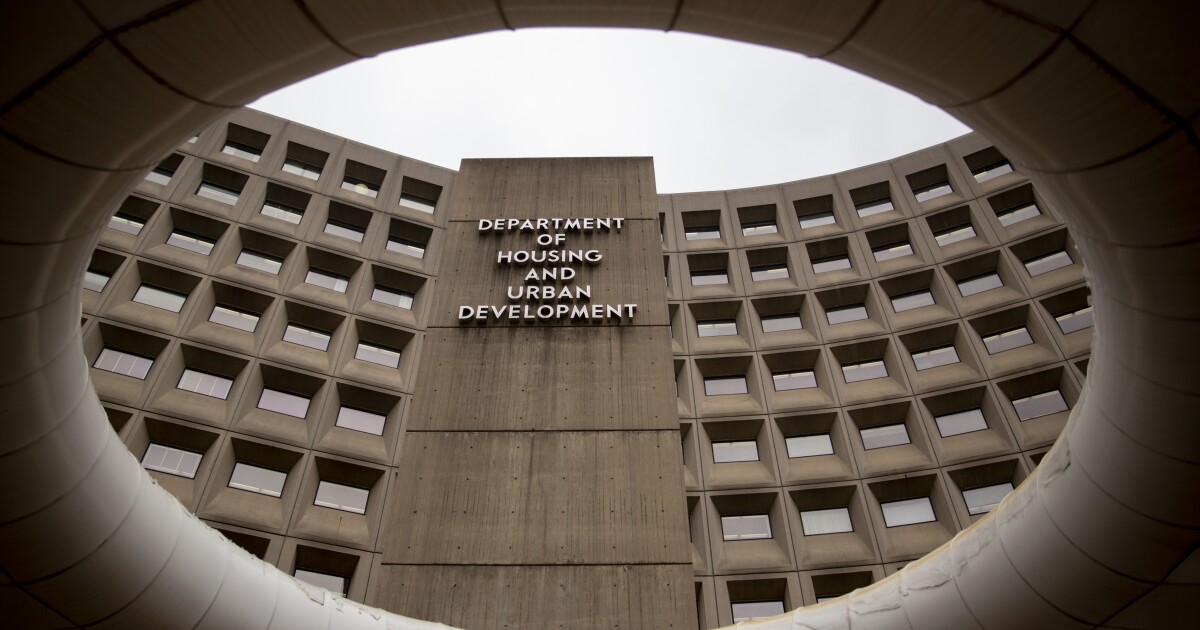
New production of bonds consisting of government agency loans used to help finance people entering the housing market rose another notch last month, slightly outpacing April's numbers and improving on the volume seen the same month a year earlier.
Securities backed by Ginnie Mae, consisting of loan pools other government agencies insure or guarantee, funded mortgages for more than 232,000 first-time homebuyers in the first five months of 2022.
And issuance of Ginnie's mortgage-backed securities rose to $34 billion, up from $33 billion the previous month and $28 billion in May 2022. The agency's outstanding portfolio also grew, rising to $2.4 trillion from $2.3 billion at the end of the first quarter.
Originations in the government-insured market also have been higher since March following a reduction in the Federal Housing Administration's annual premium.
Ginnie, an arm of the Department of Housing and Urban Development along with the FHA, did not have an immediate comment on the extent to which the increase in originations following the premium decrease played a role in the uptick in issuance.
Lenders said it's likely that at least some of the mortgages originated as a result of the premium decrease have made their way into securitizations.
"With the current turn times and if there is a significant increase in volume, we should start seeing the new volume being securitized within 45-75 days of the change," Mario Gomez, chief capital markets officer at LenderWorks, estimating the delivery time for new loans.
Typically it takes at least 30 days to deliver into a secondary market pool, said David Battany, executive vice president, capital markets, at Guild Mortgage.
While overall the new supply of bonds may be up a little, Battany said there is some concern about demand and related pricing in certain corners of the Ginnie Mae mortgage-backed securities market.
While the mortgage-insurance premium cut has reduced loan costs to some degree, other factors may be putting upward pressure on government loan prices.
That's in part because a little prepayment risk has returned to some corners of the market as a result of primary mortgage rates falling from their peak around 7% late last year into a lower range between that high and 6%.
When loans refinance it can help existing homeowners with affordability, but it can put upward pressure on the prices new ones pay for loans because prepayments reduce the attractiveness of some newer bonds to investors.
Prepayments can be particularly fast in the Ginnie market as two main loan types that feed into it, FHA mortgages and those guaranteed by the Department of Veterans Affairs, have streamlined refinancing.
The VA won't allow interest-rate reduction refinance loans until after a mortgage has aged at least six months, but once that wait time ends prepayments can be quick.
In addition, some borrowers may be able to build equity quicker due to the lower life-of-loan premium, at which point they may refinance into a Fannie Mae/Freddie Mac mortgage if one of these has a more attractive overall price. (However, the softening housing market may slow that process.)
Also investors may be skittish because they generally don't have a stable view of where rates will head next. Either falling rates that encourage refis or rising ones that could leave them with less attractive bond yields than what might be available later could be concerns.
In some cases lenders might be willing to absorb some of the reduction in secondary market income when investors pay less and offer consumers in the primary market attractive rates, but given the recent strain on originators' finances that's less likely now.
So while the FHA's mortgage-insurance premium cut may bring down one loan cost for some borrowers, weakness in the market for higher coupon MBS in the Ginnie market could raise others for lenders and consumers.
Battany called the circumstances, collectively, "a mixed blessing" for government lending and the MBS market.
In other Ginnie news, the agency recently published a global analysis report showing that the share of its bonds held by foreign investors has fallen from its peak of roughly 17.5% prior to the pandemic to 13.97% as of January 2023.
Some of that likely reflected the uptick in prepayment risk during the refinance boom that occurred as a result of rate stimulus monetary policymakers applied during the COVID-19 pandemic. Overseas investors are particularly sensitive to prepayment risk, Battany said.



